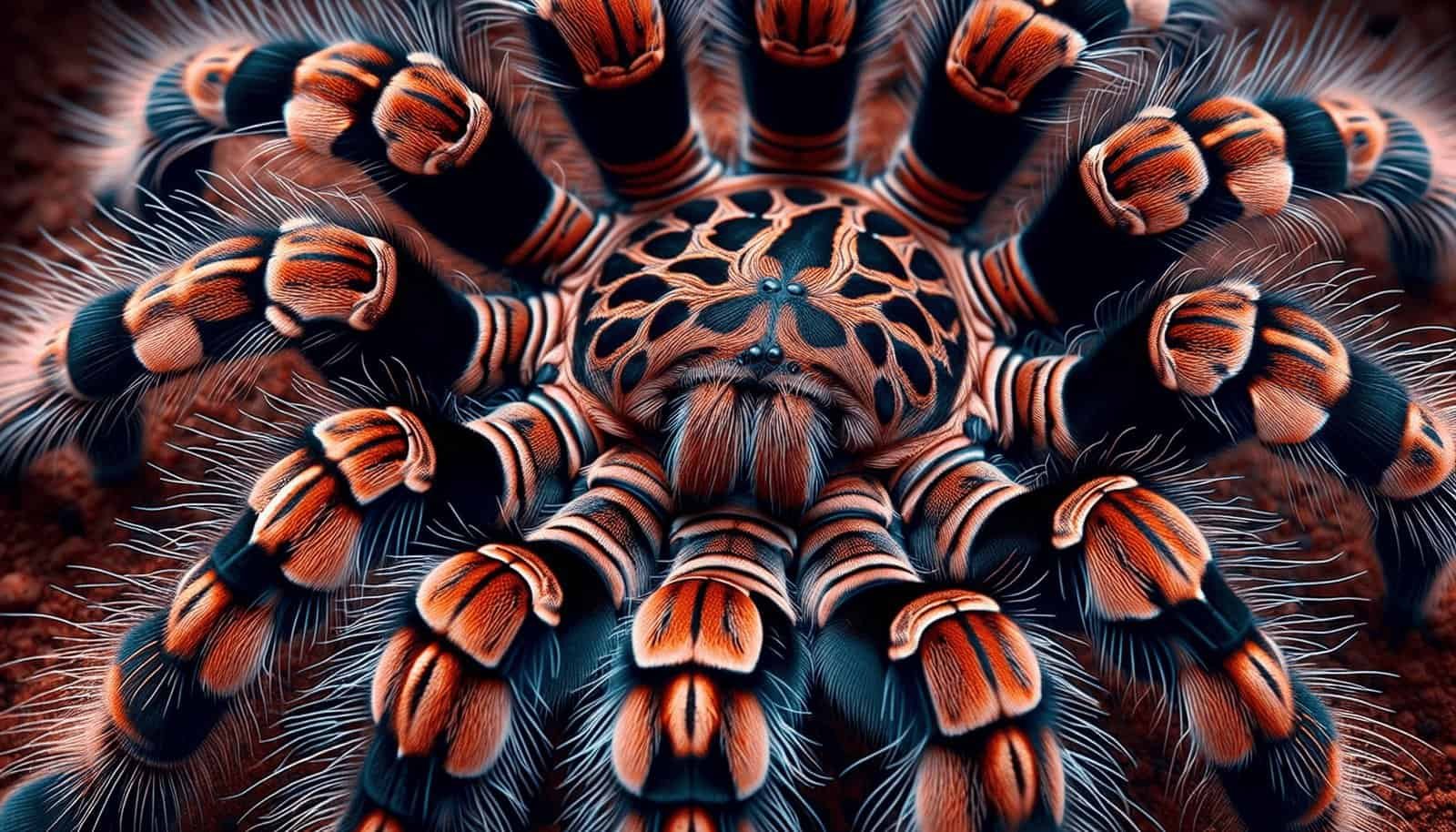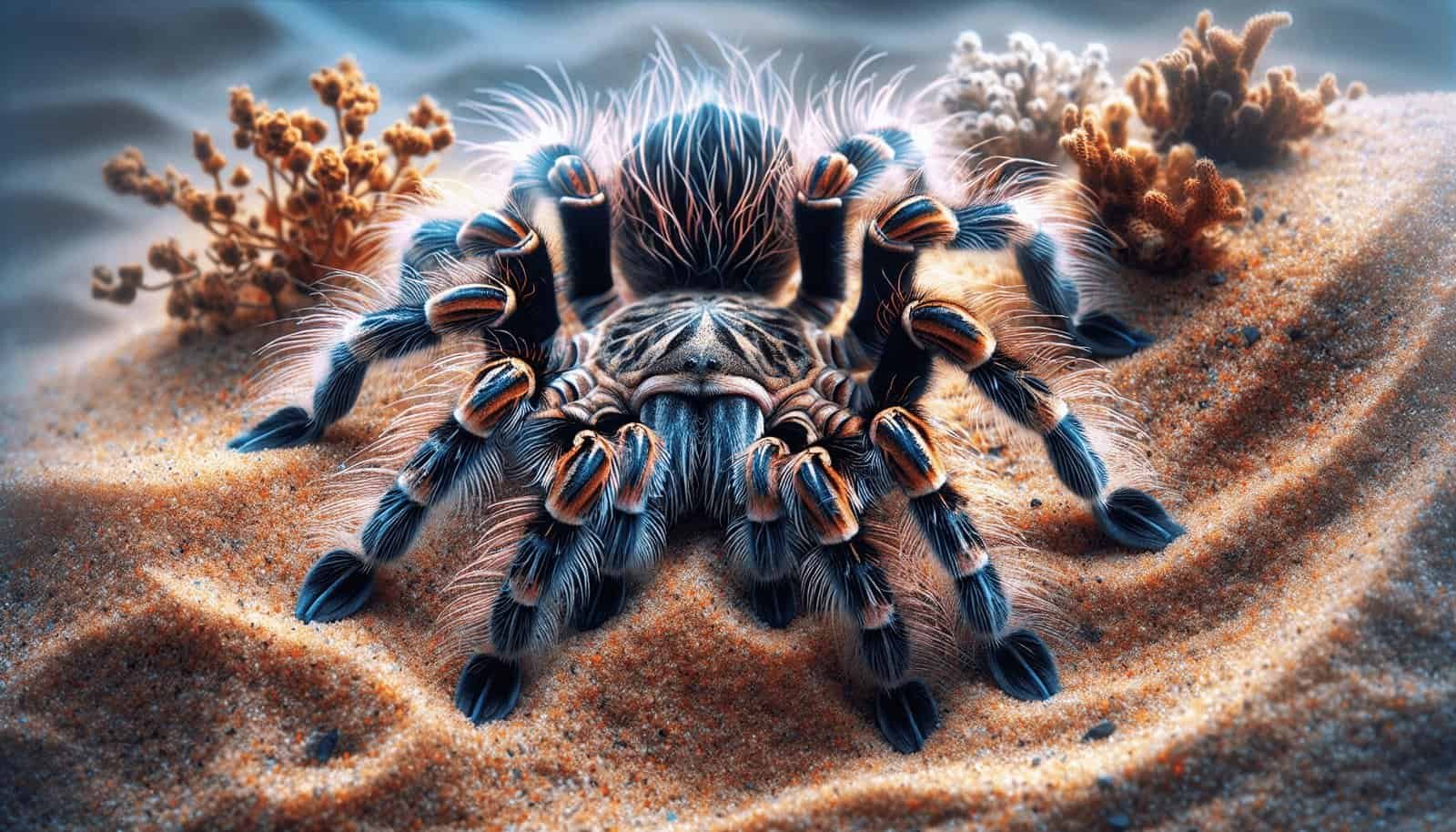If you’re looking to add a touch of the exotic to your collection of pets, why not consider desert-dwelling tarantulas? These fascinating creatures are not only beautiful but also relatively low-maintenance when kept in captivity. But with so many different species to choose from, it can be overwhelming to know where to start. That’s why we’re here to help! In this article, we will explore some of the most captivating desert-dwelling tarantula species that are perfectly suited for life in captivity. So if you’ve ever wondered what it would be like to have a hairy, eight-legged friend by your side, keep reading to discover the perfect tarantula for you.
Desert-dwelling Tarantulas
Introduction to desert-dwelling tarantulas
If you’re a fan of exotic pets and have always been intrigued by the world of arachnids, you might want to consider keeping a desert-dwelling tarantula as a pet. These fascinating creatures make for unique and low-maintenance companions. With their striking appearances and intriguing behaviors, desert-dwelling tarantulas are sure to captivate your attention and provide you with hours of enjoyment.
Benefits of keeping desert-dwelling tarantulas as pets
There are several benefits to keeping desert-dwelling tarantulas as pets. Firstly, they are relatively low-maintenance compared to other pets. Tarantulas have simple feeding and housing requirements, making them suitable for busy individuals or those who may not have much experience with pet care. Additionally, they do not require much space, so they can comfortably live in a relatively small terrarium.
Moreover, desert-dwelling tarantulas are excellent pets for those who prefer observing animals rather than interacting with them. These arachnids are more prone to displaying fascinating behaviors and engaging in natural activities within their terrariums. Watching them hunt, build webs, or molt can be a truly mesmerizing experience.
Factors to consider before getting a desert-dwelling tarantula
Before getting a desert-dwelling tarantula, it is important to consider a few factors. Firstly, it’s crucial to check local regulations to ensure that keeping these tarantulas as pets is legal in your area. Additionally, it’s essential to research and understand the specific care requirements, behaviors, and potential risks associated with keeping tarantulas.
Moreover, it’s important to evaluate your own comfort level with having a tarantula as a pet. While they are generally docile, some individuals may still feel uneasy or fearful around spiders. It’s essential to honestly assess your own feelings and decide if you are comfortable owning and caring for these creatures. If you have any concerns or anxieties, it may be best to reconsider petting a tarantula.
Popular Desert-dwelling Tarantula Species
Arizona Blonde Tarantula
The Arizona Blonde Tarantula, scientifically known as Aphonopelma chalcodes, is a popular choice among tarantula enthusiasts. It is aptly named for its stunning golden-blond hairs that cover its body. This medium-sized tarantula has a gentle disposition, making it an excellent choice for beginners or those looking for a docile pet.
Texas Brown Tarantula
The Texas Brown Tarantula, also known as Aphonopelma hentzi, is another species commonly encountered in the world of tarantulas. As its name suggests, it is found in the arid regions of Texas, Oklahoma, and New Mexico. This large and robust tarantula is known for its brownish coloration and a calm temperament, making it a great pet for tarantula enthusiasts.
Chaco Golden Knee Tarantula
The Chaco Golden Knee Tarantula, or Grammostola pulchripes, is a visually striking species originating from Paraguay and Argentina. Its name comes from the distinctive golden bands on its legs. This medium-sized tarantula has a docile nature, making it a popular choice for pet owners who want a visually appealing and low-maintenance arachnid companion.
Desert Blonde Tarantula
The Desert Blonde Tarantula, scientifically known as Aphonopelma chalcodes, is a close relative of the Arizona Blonde Tarantula. They are native to the deserts of the southwestern United States, including Arizona and New Mexico. This medium-sized tarantula is known for its sandy blonde coloration, and like its cousin, it has a calm temperament, making it suitable for beginner tarantula keepers.
Red Slate Ornamental Tarantula
The Red Slate Ornamental Tarantula, also known as Psalmopoeus pulcher, is an eye-catching species that originates from Venezuela. Its vibrant coloration, featuring shades of red and metallic blues, makes it a highly sought-after tarantula among enthusiasts. It is worth noting that the Red Slate Ornamental Tarantula may require more advanced care due to its specific environmental needs and slightly more aggressive temperament.

Arizona Blonde Tarantula
Physical description and characteristics
The Arizona Blonde Tarantula has a robust body covered in beautiful golden-blond hairs, which give it a striking appearance. The adults can reach a leg span of approximately 4-5 inches, making them a medium-sized species of tarantula. They have eight legs, with the front two adapted for capturing prey and manipulating their environment.
Habitat requirements
In the wild, Arizona Blonde Tarantulas inhabit desert regions, where the conditions are hot and dry. Thus, replicating their natural habitat is crucial for their well-being in captivity. A terrarium with a sand or desert-like substrate would be suitable, along with providing hides or rocks for them to burrow or hide under. It’s important to maintain a temperature range of 75-85°F (24-29°C) and a low humidity level of around 30-40%.
Feeding and diet
Arizona Blonde Tarantulas are carnivorous, feeding primarily on insects and other small invertebrates. In captivity, they can be fed a diet of live crickets, roaches, or mealworms. It’s essential to ensure that the prey is an appropriate size for the tarantula to prevent any potential injuries. Feeding once or twice a week is usually sufficient to meet their nutritional needs.
Behavior and temperament
Arizona Blonde Tarantulas are generally docile and have a calm temperament. However, individual behaviors may vary, and some tarantulas may exhibit defensive behaviors if they feel threatened. It’s important to respect their space and avoid sudden movements or stress-inducing situations. When properly cared for, Arizona Blonde Tarantulas can live for several years in captivity.
Captive breeding information
Captive breeding of Arizona Blonde Tarantulas is relatively common among tarantula enthusiasts. However, it requires specialized knowledge and equipment. It is advisable to acquire captive-bred specimens to prevent the removal of tarantulas from the wild and support conservation efforts.
Availability and cost
Arizona Blonde Tarantulas are widely available in the pet trade, both from professional breeders and pet stores. The cost can vary depending on factors such as age, size, and breeding status. Generally, captive-bred specimens tend to be more expensive compared to wild-caught individuals. Prices typically range from $50 to $150, depending on the specific characteristics of the tarantula.
Texas Brown Tarantula
Physical description and characteristics
The Texas Brown Tarantula is a large and robust species with a leg span of 4-5 inches. They have a dark brown or blackish coloration, which helps them blend into their arid environment. The tarantula’s body is covered in fine hairs, including longer, stiffer hairs on their legs.
Habitat requirements
In captivity, Texas Brown Tarantulas require a terrarium with a substrate that mimics their natural environment, such as a mix of soil and sand. Providing hideouts, such as hollowed-out logs or rocks, is essential for them to burrow and create a secure space. The temperature should be maintained between 75-85°F (24-29°C), with a humidity level of approximately 30-40%.
Feeding and diet
Texas Brown Tarantulas are opportunistic carnivores, preying on insects and other small invertebrates in the wild. When kept as pets, they can be fed a variety of appropriately sized live prey, such as crickets, roaches, or mealworms. Offering them food once or twice a week is generally sufficient.
Behavior and temperament
Texas Brown Tarantulas are known for their calm temperament. They are generally docile and unlikely to display aggressive behaviors, even when provoked. However, it’s important to approach them with caution and avoid unnecessary disturbances to prevent any potential defensive responses.
Captive breeding information
Breeding Texas Brown Tarantulas in captivity can be challenging and requires specific knowledge and conditions. While it is possible, it is often left to experienced breeders. As with other species, it is advisable to support captive breeding efforts for the conservation and sustainability of tarantulas.
Availability and cost
Texas Brown Tarantulas are commonly available in the pet trade due to their tolerance for captivity and popularity as pets. The cost of a Texas Brown Tarantula can range from $30 to $80, depending on factors such as age, size, and breeding status.

Chaco Golden Knee Tarantula
Physical description and characteristics
The Chaco Golden Knee Tarantula is a visually stunning species known for its golden coloration on its legs and abdomen. They can reach a leg span of about 6-8 inches when fully grown, making them a medium to large-sized tarantula. Their bodies are covered in tiny golden hairs, adding to their overall beauty.
Habitat requirements
Chaco Golden Knee Tarantulas come from the arid regions of Paraguay and Argentina. In captivity, they require a terrarium with a sand or soil substrate and plenty of hiding places. A temperature range of 75-85°F (24-29°C) and a humidity level of around 40-60% should be maintained to ensure their well-being.
Feeding and diet
Chaco Golden Knee Tarantulas are opportunistic feeders, primarily consuming insects and small invertebrates in the wild. As pets, they can be fed a diet consisting of live crickets, roaches, or other appropriate-sized prey. Feeding them once or twice a week is typically sufficient.
Behavior and temperament
Chaco Golden Knee Tarantulas are generally docile and known for their calm temperament. However, like all tarantulas, they may display defensive behaviors if they feel threatened. It’s important to handle them with care and avoid unnecessary stress to maintain their well-being.
Captive breeding information
Captive breeding of Chaco Golden Knee Tarantulas is relatively common, and there are usually captive-bred specimens available in the pet trade. Breeding them requires specific knowledge and conditions, making it a task best left to experienced breeders.
Availability and cost
Chaco Golden Knee Tarantulas are commonly available in the pet trade due to their popularity among tarantula enthusiasts. The cost of a Chaco Golden Knee Tarantula can range from $70 to $200, depending on factors such as age, size, and breeding status.
Desert Blonde Tarantula
Physical description and characteristics
The Desert Blonde Tarantula, also known as Aphonopelma chalcodes, closely resembles its cousin, the Arizona Blonde Tarantula. They have a medium-sized body covered in sandy-blonde hairs, which gives them their name. Their leg span can range from 4-6 inches when fully grown.
Habitat requirements
Desert Blonde Tarantulas are native to the deserts of the southwestern United States, primarily Arizona and New Mexico. In captivity, they require a terrarium with a sandy or desert-like substrate, along with hides or rocks for burrowing or hiding. The temperature should be maintained between 75-85°F (24-29°C), and the humidity kept low, around 30-40%.
Feeding and diet
Like other desert-dwelling tarantulas, Desert Blonde Tarantulas are carnivorous, feeding on insects and small invertebrates. In captivity, they can be fed a diet consisting of live crickets, roaches, and mealworms. Feeding once or twice a week is usually sufficient to meet their dietary needs.
Behavior and temperament
Desert Blonde Tarantulas are generally docile and have a calm temperament, making them suitable for beginner tarantula keepers. They are known for their relatively relaxed nature, but it’s important to handle them with care and avoid any unnecessary stress to ensure their well-being.
Captive breeding information
Captive breeding of Desert Blonde Tarantulas is relatively common, and many captive-bred specimens are available in the pet trade. Captive breeding helps to preserve the species and reduces the impact on their wild populations.
Availability and cost
Desert Blonde Tarantulas are widely available in the pet trade, and their popularity ensures a steady supply. The cost of a Desert Blonde Tarantula can range from $50 to $150, depending on factors such as age, size, and breeding status.

Red Slate Ornamental Tarantula
Physical description and characteristics
The Red Slate Ornamental Tarantula, scientifically known as Psalmopoeus pulcher, is a visually stunning species originating from Venezuela. Their bodies feature a vibrant combination of red, black, and metallic blue colors, making them a captivating addition to any collection. They have a leg span of around 4-5 inches when fully grown.
Habitat requirements
Red Slate Ornamental Tarantulas require a terrarium with a substrate that allows for burrowing, such as a mix of soil and moss. They also appreciate having branches or cork bark to climb on and create webs. In terms of temperature, a range of 75-85°F (24-29°C) should be maintained, along with a humidity level of 60-70%.
Feeding and diet
In the wild, Red Slate Ornamental Tarantulas feed on a variety of prey, including insects and small vertebrates. As pets, they can be fed a diet consisting of appropriately sized live prey such as crickets, roaches, and even small lizards or pinky mice. It is important to provide a diverse diet to ensure their nutritional needs are met.
Behavior and temperament
Red Slate Ornamental Tarantulas are known for their slightly more aggressive temperament compared to other species. They can be defensive and may display threat postures when provoked. It’s essential to handle them with caution and avoid unnecessary stress or disturbances.
Captive breeding information
Captive breeding of Red Slate Ornamental Tarantulas has been successful, and captive-bred specimens are available in the pet trade. Supporting captive breeding efforts helps preserve the species and contributes to lessening the impact on their populations in the wild.
Availability and cost
Red Slate Ornamental Tarantulas are highly sought-after among tarantula enthusiasts and are typically available from specialty breeders. Due to their stunning appearance and specific care requirements, the cost of a Red Slate Ornamental Tarantula can range from $100 to $300, depending on factors such as age, size, and breeding status.
Tarantula Care and Housing
Terrarium setup and requirements
Setting up an appropriate terrarium is essential for the well-being of desert-dwelling tarantulas. The terrarium should be spacious enough to allow the tarantula to move around comfortably and have different areas to explore. Providing hiding spots or shelters, such as half-logs, cork bark, or artificial caves, is crucial for the tarantula’s sense of security.
Temperature and humidity needs
Maintaining the appropriate temperature and humidity levels is vital for the health of desert-dwelling tarantulas. Most species prefer a temperature range of 75-85°F (24-29°C), with slight variations depending on the specific species. It’s important to ensure that the terrarium is not exposed to direct sunlight or drastic temperature fluctuations. The humidity level should be kept low, around 30-60%, depending on the species’ natural habitat.
Substrate selection
Choosing the right substrate is crucial for creating a suitable environment for desert-dwelling tarantulas. A sandy or desert-like substrate works well for most species, providing them with a natural-feeling surface. It’s important to create a substrate layer that allows for burrowing and helps maintain proper humidity levels within the terrarium.
Decorations and hiding spots
Adding decorations and hiding spots within the terrarium is important for the well-being and enrichment of desert-dwelling tarantulas. These additions mimic their natural habitat and provide them with places to hide or create webs. Half-logs, cork bark, artificial plants, and rocks are commonly used accessories that can enhance their living space.
Feeding and watering guidelines
Feeding desert-dwelling tarantulas requires providing them with a varied diet of live insects and small invertebrates. Choosing appropriately sized prey is crucial to prevent any potential injuries to the tarantula. Additionally, a small water dish should be provided in the terrarium for drinking purposes. It’s important to ensure that the water is fresh and clean at all times.
Handling and safety precautions
It’s important to note that handling desert-dwelling tarantulas is generally not recommended. While some species have a calm temperament, others may become defensive or stressed when handled. Additionally, certain tarantulas possess urticating hairs that can cause skin irritation or allergic reactions in some individuals. If handling is necessary, it should be done with extreme caution and after evaluating the specific species’ behavior and individual tarantula’s tolerance.

Importance of not handling tarantulas
Tarantulas, including desert-dwelling species, are not ideal pets for those seeking hands-on interaction. Handling them can be stressful for the tarantula and increase the risk of injury or aggression. Tarantulas are best enjoyed from a distance, observing their natural behaviors within the confines of their terrarium.
Safe handling techniques if necessary
If handling becomes absolutely necessary, it’s crucial to take certain safety precautions. Firstly, make sure your hands are clean and free from any lotions, oils, or strong scents that may irritate the tarantula. Gently coax the tarantula into a suitable container, such as a transparent cup or tub, rather than attempting to handle it directly. Avoid sudden movements and keep the handling time to a minimum. Always wash your hands thoroughly after any contact with the tarantula.
Potential risks and allergies
It’s important to be aware of potential risks associated with keeping tarantulas as pets. While they are generally docile, tarantulas may bite or exhibit defensive behaviors if they feel threatened. Their bites may cause localized pain, redness, and swelling. Additionally, some individuals may have allergies to tarantula hairs, which can cause skin irritation, itching, or respiratory difficulties. If you have a known allergy to spider bites or insect allergies, it’s advisable to exercise extra caution or reconsider owning a tarantula.
Conclusion
In conclusion, desert-dwelling tarantulas, such as the Arizona Blonde Tarantula, Texas Brown Tarantula, Chaco Golden Knee Tarantula, Desert Blonde Tarantula, and Red Slate Ornamental Tarantula, are fascinating and unique pets. By understanding their physical characteristics, habitats, feeding requirements, and behaviors, you can provide the proper care and environment they need. However, it’s important to consider the responsibilities of tarantula ownership, and whether you are comfortable with the potential risks and limitations that come with owning these captivating arachnids. With the right knowledge, care, and respect for these creatures, owning a desert-dwelling tarantula can offer you enjoyment, relaxation, and a deeper appreciation for the diversity of the natural world.
